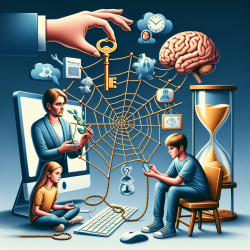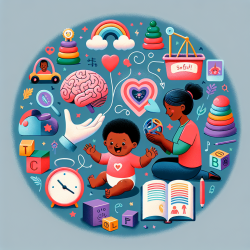Introduction
The rise of internet usage among children and adolescents has led to increased concerns about internet addiction, also known as problematic internet use. This condition is characterized by excessive or poorly controlled preoccupations, urges, or behaviors related to internet use, resulting in distress or impairment. Addressing this issue, a systematic review titled "Treatment Modalities for Internet Addiction in Children and Adolescents: A Systematic Review of Randomized Controlled Trials (RCTs)" explores various interventions to mitigate this growing concern.
Key Findings from the Systematic Review
The systematic review analyzed 10 randomized controlled trials focusing on treatment interventions for internet addiction in adolescents. These studies utilized diverse interventions, including cognitive-behavioral therapy (CBT), medication, electro-acupuncture (EA), and solution-focused approaches. The results indicate that interventions such as CBT and EA can effectively reduce symptoms of internet addiction, internet gaming disorder, and unspecified internet use disorders.
Implications for Practitioners
Practitioners working with children and adolescents should consider incorporating these evidence-based interventions into their practice. Key takeaways for practitioners include:
- Cognitive-Behavioral Therapy (CBT): CBT has shown significant effectiveness in reducing internet addiction symptoms. Practitioners can integrate CBT techniques to help children develop healthier internet use habits.
- School-Based Programs: Implementing school-based programs can provide a structured environment to address internet addiction. These programs can educate students on healthy internet use and offer support to those struggling with addiction.
- Alternative Therapies: Techniques like electro-acupuncture have shown promise in reducing impulsive behaviors associated with internet addiction. Practitioners should consider these alternative therapies as part of a comprehensive treatment plan.
Challenges and Future Directions
Despite the promising results, challenges remain in the treatment of internet addiction. Inconsistencies in terminology and diagnostic criteria can hinder accurate reporting and treatment efficacy. Continued research is needed to establish standardized criteria and explore long-term effectiveness of these interventions.
Practitioners are encouraged to stay informed about the latest research developments and consider participating in studies to further the understanding of effective treatments for internet addiction.
Conclusion
Internet addiction in children and adolescents is a complex issue requiring a multidisciplinary approach. By integrating evidence-based interventions such as CBT and school-based programs, practitioners can play a crucial role in mitigating the impact of internet addiction on young individuals. Continued research and collaboration among professionals are essential to refine treatment strategies and improve outcomes for affected children and adolescents.
To read the original research paper, please follow this link: Treatment Modalities for Internet Addiction in Children and Adolescents: A Systematic Review of Randomized Controlled Trials (RCTs).










